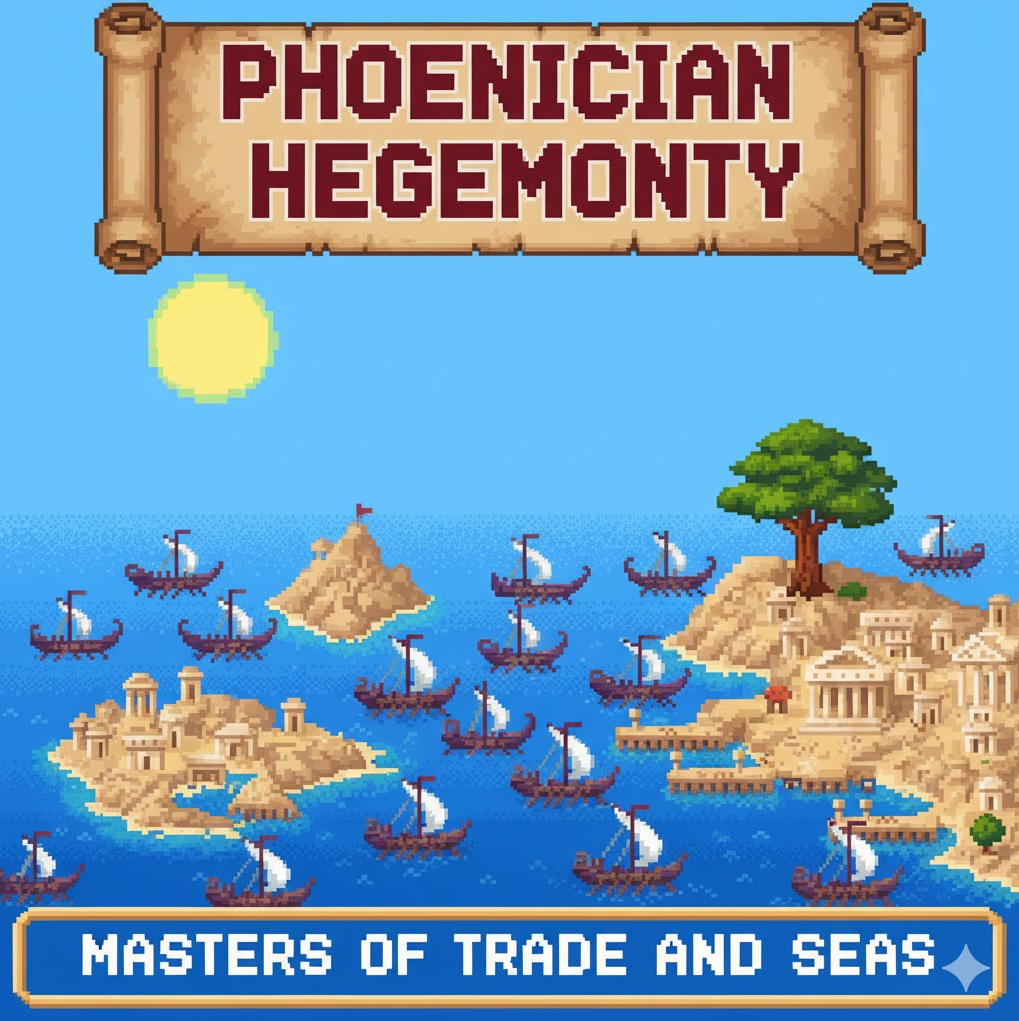Deities and Major Religious Figures
Phoenician religion was polytheistic, characterized by a pantheon of powerful gods and goddesses. Their spiritual life was deeply intertwined with their natural environment, especially the sea and fertility.
The Pantheon
- Baal (Ba'al): The paramount deity, often referred to as Ba'al Shamem (Lord of Heaven). He was a powerful storm and fertility god, responsible for rain and agricultural success.
- Astarte (Ashtoreth): Goddess of fertility, war, hunting, and sensual love. She was a major figure in Sidon and a counterpart to the Babylonian Ishtar.
- Melqart: The patron god of Tyre, often called the "King of the City." He was a god of the sea, colonization, and the cycle of death and rebirth. The Greeks equated him with Heracles.
- El: The supreme father god, often portrayed as an ancient, wise, and benevolent figure. While sometimes less prominent than Baal in daily worship, he held the highest rank in the mythological structure.
- Tanit: The chief goddess worshipped in the colony of Carthage. She was considered the consort of Baal Hammon and symbolized the celestial mother or war goddess.
- Eshmun: The god of healing and renewal, the principal deity of Sidon.
Major Historical/Religious Figures
- King Hiram I of Tyre (c. 969–936 BCE): A crucial historical figure, mentioned in the Bible (1 Kings 5). He was a contemporary and ally of King David and King Solomon, providing cedar wood, gold, and skilled craftsmen for the construction of the Temple in Jerusalem. His reign marked the apex of Tyre's power.
- Dido (Elissa, c. 814 BCE): The legendary founder and first Queen of Carthage, often celebrated in classical literature (especially Virgil's *Aeneid*). Though mythical in parts, she represents the daring spirit of Phoenician colonization.
The Glory Years: Masters of Trade and the Seas
Phoenicia, centered on the cities of Tyre, Sidon, and Byblos, rose to global prominence not through empire, but through an unrivaled mastery of maritime trade and navigation.
The Maritime Network
The Phoenicians established a vast, interconnected trade network across the Mediterranean, stretching from their homeland in the Levant to the coasts of North Africa, Sicily, Sardinia, Spain, and possibly even the British Isles. They were the premier shipping and trading force of the ancient world.
Key Goods and Inventions
- Tyrian Purple: Their most famous and valuable export, a rare dye extracted from the Murex sea snail. It became a symbol of royalty, giving them immense wealth and earning them the Greek name "Phoinikes" (Purple People).
- The Alphabet: Their greatest intellectual contribution. To facilitate complex, multi-lingual trade, they simplified Mesopotamian cuneiform and Egyptian hieroglyphs into a phonetic, 22-character alphabet, which became the foundation for Greek, Latin, and nearly all Western writing systems.
- Resources: They traded Lebanese cedar wood (prized for shipbuilding), glass, metalwork, wine, oil, and enslaved people.
- Shipbuilding: They pioneered advanced shipbuilding techniques, including the use of high-volume merchant ships and specialized warships.
From Colony to Catastrophe: The Saga of Carthage
The history of Phoenicia culminates in the fate of its greatest colony, Carthage (founded c. 814 BCE in modern Tunisia). Carthage inherited the Phoenician naval and commercial might, becoming an independent thalassocracy.
The Punic Wars (264–146 BCE)
Carthage's power inevitably brought it into conflict with the rising Roman Republic. Their struggle for dominance over the Western Mediterranean resulted in three devastating conflicts known as the Punic Wars (named for Rome's name for the Phoenicians: *Poeni*).
Key Moments and Destruction
- Second Punic War (218–201 BCE): Famous for the Carthaginian general Hannibal Barca, who led an army, including war elephants, across the Alps to invade Italy and inflicted devastating defeats upon Rome (e.g., Cannae). Rome eventually rebounded under Scipio Africanus, defeating Hannibal at Zama in 202 BCE.
- Third Punic War (149–146 BCE): Fueled by Roman fear and bitterness, exemplified by Cato the Elder's famous declaration, "Carthago delenda est" (Carthage must be destroyed).
- The Destruction of Carthage (146 BCE): The war concluded with a three-year siege. The city was utterly destroyed, its inhabitants sold into slavery, and the site symbolically plowed over, marking the final end of the independent Phoenician-Punic civilization and ensuring Rome's absolute dominance.

